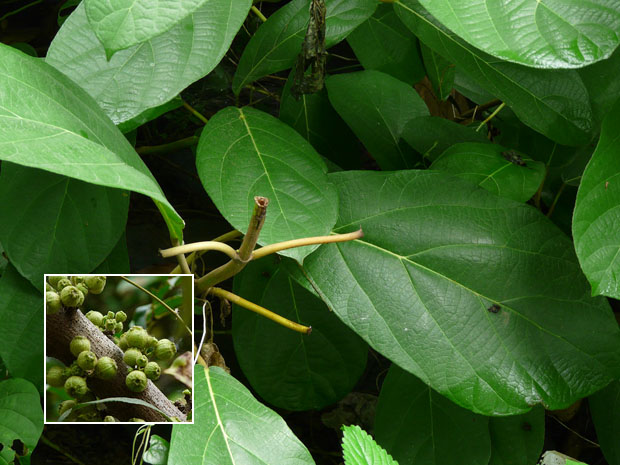
Creeping Fig
Genus: Ficus
Botanical name: Ficus hispida Linn
PLANT NAME IN DIFFERENT LANGUAGES
Sanskrit: Malayu, Kakodumbarika
Hindi: Gobla
English: Hairy Fig, Creeping fig, Devil fig, Opposite-leaved fig-tree, Rough-leaved fig
Malayalam: Erumanak, Parakam, Kattatti
MEDICINAL PROPERTIES
Hairy Fig is a coarsely hairy shrub or small tree. Ovate-lanceshaped stipules are usually 4, and are visible on leafless fruiting branchlets. Oppositely arranged leaves, on 1-4 cm long stalks, are ovate, oblong, or obovate-oblong, 10-25 cm long, 5-10 cm wide, thickly papery, covered with coarse hairs. Leaf base is rounded to wedgeshaped, margin is entire or bluntly toothed, tip is pointed. Figs appear in leaf axil on normal leafy shoots, sometimes on leafless branchlets, solitary or paired, yellow or red when mature, top-shaped, 1.2-3 cm in diameter.
The bark is emetic and laxative, is used as poultice by applying to bubo. The fruits are bitter, refrigerant, astringent, acrid, anti-dysenteric, anti-inflammatory, depurative, vulnerary, haemostatic and galactagogue. They are useful in ulcere, leucoderma, psoriasis, anaemia, haemorrhoids, jaundice, epistaxis, stomatorrhagia, inflammations, intermittent fever and vitiated conditions of pitta.
